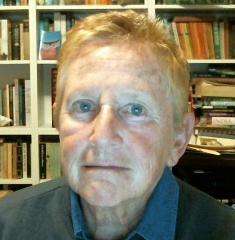Glynebourne’s celebrated production of Handel’s Saul has made the transition Down Under without a hitch. Originally directed for Glyndebourne by Melbourne boy Barrie Kosky, the stunning realisation of what is perhaps Handel’s most dramatic oratorio was again brought to life under revival director Donna Stirrup, although Kosky was there for the opening night at least. Some of the original English cast appeared including, crucially I think, Christopher Purves in the title role.
For those who might have been living under a rock, operatically speaking, Kosky has provided an unmitigated feast for the eye while hewing closely to the story played out in the music and text, the latter derived from the Old Testament story of King Saul, his son Jonathan and the latter’s friend David, the singer of songs and Saul's eventual successor. The oratorio opens with the head of Goliath emerging from the darkness, then the begrimed back of David with sling and fatal rock. A dark scrim ascends to the first notes of “How excellent” to reveal a stunning tableau of brightly accoutred chorus on a long table with white cloth amidst a cornucopia of fruit, vegetables, a large fish, swan, peacock, stag and giant clam. There was much applause at the combination of sumptuous scene and bright chorus.
The production exemplifies Kosky’s self-described “extravagant minimalism”, with a very basic setting of two tables occasionally joined as one perched on an apparent layer of topsoil, with the extravagance limited to whatever happens to be on the table, and the exaggerated 18th-century(ish) outfits (sets and costumes originally by Katrin Lea Tag). It also features a high level of kinetic energy, achieved by a manic sextet of dancers and quite a bit of choreography for the chorus and soloists (original choreographer Otto Pichler, and Merry Holden for Adelaide). A series of stunning trompes l’oeil included a sea of candles after the interval (actually some way through Part II), through which arose a spiralling chamber organ being played by conductor Erin Helyard. Similarly, the Witch of Endor also arose from the humic substrate between the thighs of the seated Saul. This semi-naked androgynous figure, from which Saul received the inspiration needed to call up and channel Samuel by suckling from their breast, excited some rather nervous giggling from the audience.
Helyard, experienced Baroque conductor and keyboard player, led the modern Adelaide Symphony Orchestra, augmented by continuo harpsichord (Anthony Abouhamad) and theorbo (Josep Maria Marti Duran) in as close to an historically informed performance as might be expected, achieving a crisp but warm effect. The State Opera Chorus under concertmaster and experienced Handelian Brett Weymark, conveyed exuberance, dismay and solemnity as required, while performing intricate movements.
Properly dominating the cast was Purves’ remarkable performance as Saul, tracing the trajectory from noble king and proud father through jealous rage at David, to the ultimate madness of dealing with the Witch to summons Samuel for his not very encouraging advice. Saul does not get to sing that much, but his resonant bass and total immersion in character carry all before it. While Iestyn Davies was outstanding at Glyndebourne, American countertenor Christopher Lowrey, stunning in last year’s Pinchgut Theodora, was a worthy replacement. Beginning with a stunning messa di voce on “O king, your favours”, his “O Lord, whose mercies” was a miracle of control and golden tone. There is not a great call for embellishment in Saul, but Lowrey’s coloratura provided some vocal luxury, with some brilliant high notes in his eulogy for Jonathan.
Mary Bevan, sister of Sophie from the original cast, sang with warm and even tone as Merab. She managed the transition from snobby bitch to an acceptance of the low-born David quite convincingly; “Mean as he was” was sung with great detail and phrasing. Michal was sung by Opera Australia regular Taryn Fiebig who, after a somewhat shrill start who brought a warm presence and sparkly soprano to the part. The rather limited part of Jonathan was well brought off by Berlin based Australian born tenor Adrian Strooper, and Kanen Breen, another Opera Australia stalwart, and always entertaining presence, was the Witch of Endor.
In this production the roles of High Priest, Abner and Doeg are rolled in together, concentrated in one clown-like figure as an ironic commentator on the unfolding narrative. This was very entertainingly performed by English tenor Stuart Jackson.
This performance, under the aegis of Adelaide Festival with the State Opera of South Australia, was sold out almost from the day of its announcement. The audience was not disappointed, and the first night concluded with a standing ovation.




